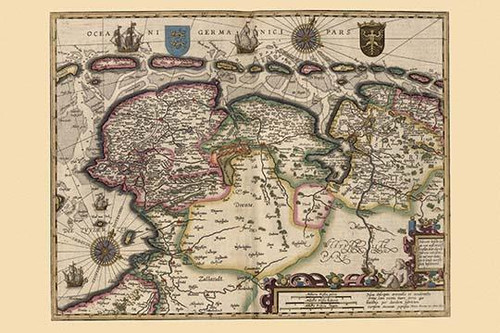Product Overview
The Leo Belgicus, Latin for Netherlandic Lion is a map of the Low Countries drawn in the shape of a lion. The earliest Leo Belgicus was drawn by the Austrian cartographer Michael Aitzinger in 1583, when the Netherlands were fighting the Eighty Years' War for independence. The motif was inspired by the heraldic figure of the lion, occurring in the coats of arms of several of the Netherlands, namely: Brabant, Flanders, Guelders, Hainout, Holland, Limburg, Luxembourg and Zeeland, as well as in those of William of Orange. Aitzinger's map was the first of many. There were three different designs. In the most common one, the lion's head was located in the northeast of the country and the tail in the southeast. The most famous version is that of Claes Janszoon Visscher, which was published in 1609 on the occasion of the Twelve Years' Truce. A less common design reversed the position of the lion, as shown in the Leo Belgicus by Jodocus Hondius. The third version was published in the later stages of the war, and after the independence of the Dutch Republic was confirmed in the Peace of Westphalia (1648). It is called the Leo Hollandicus, the Holland Lion, and shows only the province of Holland. One of the earliest versions was published by Visscher around 1625. - There is a border around the image. Image size is correct. Many sizes available.







